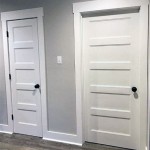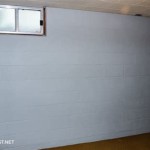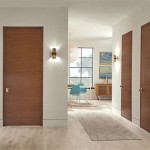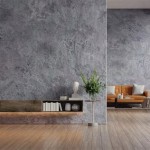What Is Contemporary Interior Design?
Contemporary interior design is often confused with modern design. While they share some similarities, they are distinct styles with unique characteristics. Contemporary design is fluid and constantly evolving, reflecting current trends and styles, whereas modern design refers specifically to the design aesthetic popularized in the mid-20th century. Understanding the defining features of contemporary design allows for a more informed approach to creating and appreciating this dynamic style.
Key Characteristics of Contemporary Interior Design
Several key characteristics define the contemporary design aesthetic. These elements work together to create spaces that feel current, fresh, and sophisticated.
*
Emphasis on Lines and Geometric Shapes:
Clean lines and geometric forms are foundational to contemporary design. Furniture often features sharp, defined edges and silhouettes. This focus on structure creates a sense of order and sophistication. * Neutral Color Palettes with Bold Accents:** Neutral colors like white, beige, gray, and black dominate contemporary interiors, providing a calming backdrop. These neutral foundations are often punctuated with bold accent colors in artwork, textiles, or decorative accessories, adding personality and visual interest. * Open Floor Plans and Natural Light:** Contemporary design often incorporates open floor plans, promoting a sense of spaciousness and flow between living areas. Maximizing natural light is also a key consideration, achieved through large windows and strategically placed mirrors. * Use of Natural Materials:** Materials like wood, stone, and metal are frequently used in contemporary design, adding warmth and texture to the space. These natural elements contribute to a more organic and grounded aesthetic.Furniture in Contemporary Interiors
Furniture selection plays a crucial role in defining a contemporary space. Pieces are chosen for their functionality, clean lines, and contribution to the overall aesthetic.
* Streamlined and Functional Furniture:** Furniture in contemporary spaces is typically streamlined and functional, avoiding excessive ornamentation. Pieces are selected for their practicality and contribution to the overall minimalist aesthetic. * Emphasis on Comfort and Functionality:** While aesthetics are important, comfort and functionality are equally valued. Furniture is chosen to serve its intended purpose effectively while providing a comfortable and inviting experience. * Mix of Textures and Materials:** A blend of textures and materials, such as leather, wood, and metal, can add depth and visual interest to a contemporary space. This careful blending prevents the room from feeling sterile or monotonous.
Lighting in Contemporary Design
Lighting is a crucial element in contemporary interior design, serving both functional and aesthetic purposes. Careful lighting choices enhance the overall ambiance and highlight key design features.
* Layered Lighting Approach:** Contemporary design often employs a layered lighting approach, combining ambient, task, and accent lighting. Ambient lighting provides overall illumination, task lighting focuses on specific areas, and accent lighting highlights artwork or architectural features. * Use of Statement Lighting Fixtures:** Statement lighting fixtures can serve as focal points in a contemporary space. These fixtures often feature unique designs and materials, adding personality and visual interest. * Integration of Natural Light:** Maximizing natural light is a priority in contemporary design. Large windows, skylights, and strategically placed mirrors can help bring natural light into the space, creating a brighter and more inviting atmosphere.
Decor and Accessories in Contemporary Interiors
Decorative elements and accessories play a significant role in personalizing a contemporary space and adding touches of personality without overwhelming the clean aesthetic.
* Minimalist Approach to Accessories:** A minimalist approach is typically adopted when choosing accessories. A few carefully selected pieces, such as sculptures, vases, or artwork, can add personality and visual interest without cluttering the space. * Use of Abstract Art and Geometric Patterns:** Abstract art and geometric patterns are frequently incorporated into contemporary interiors, contributing to the overall modern and sophisticated aesthetic. These elements can add visual interest and pops of color. * Incorporation of Textural Elements:** Textural elements, such as rugs, cushions, and throws, can add warmth and depth to a contemporary space. These elements create a more inviting and comfortable atmosphere.
The Evolution of Contemporary Design
Contemporary design is not static; it continuously evolves, incorporating new trends and influences. This continuous evolution is what distinguishes it from other design styles tied to specific historical periods.
* Influence of Technology and Sustainability:** Technological advancements and a growing emphasis on sustainability influence contemporary design. Smart home technology and eco-friendly materials are increasingly integrated into contemporary interiors. * Blending of Styles and Influences:** Contemporary design often incorporates elements from other design styles, creating unique and personalized spaces. This eclectic approach allows for greater flexibility and creativity. * Focus on Functionality and Livability:** Ultimately, contemporary design prioritizes functionality and livability. Spaces are designed to be both aesthetically pleasing and practical, meeting the needs of modern lifestyles.
Distinguishing Contemporary from Modern Design
While often used interchangeably, contemporary and modern design are distinct styles with unique characteristics. Understanding the differences is crucial for accurate categorization and appreciation.
* Contemporary as a Reflection of Current Trends:** Contemporary design, by definition, reflects current trends and styles. This means that it is constantly evolving and adapting to new influences. * Modern Design as a Specific Historical Period:** Modern design, on the other hand, refers to a specific historical period, primarily the mid-20th century. It is characterized by clean lines, simple forms, and a focus on functionality. * Key Differences in Materials and Ornamentation:** While both styles emphasize clean lines and functionality, they differ in their use of materials and ornamentation. Modern design often features natural materials like wood and leather, while contemporary design may incorporate a wider range of materials, including plastics and composites. Modern design tends to avoid ornamentation, while contemporary design may incorporate more decorative elements.

Contemporary Vs Modern Interior Design Everything To Know Décor Aid

What Is Contemporary Interior Design Amp How To Get It Right

Contemporary Interior Design Style All You Need To Know Beautiful Homes

Evergreen Design Elements That Define Contemporary Interiors 7 Features Last The Test Of Time Archdaily

Contemporary Design Style And The Essentials To Master It Décor Aid

Difference Between Modern Vs Contemporary Interior Design

10 Contemporary Interior Design Ideas Of 2024 Designcafe

What Is Contemporary Interior Design Jd Institute Of Fashion Technology

Contemporary Interior Design Style For Houses And Apartments

Contemporary Design Style And The Essentials To Master It Décor Aid
Related Posts








